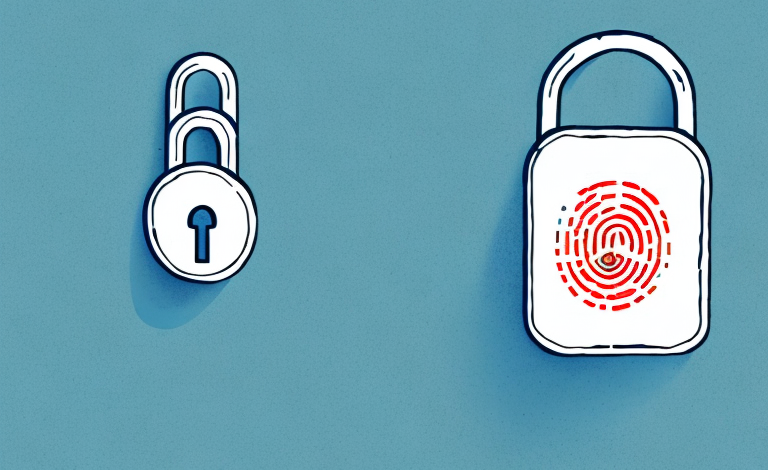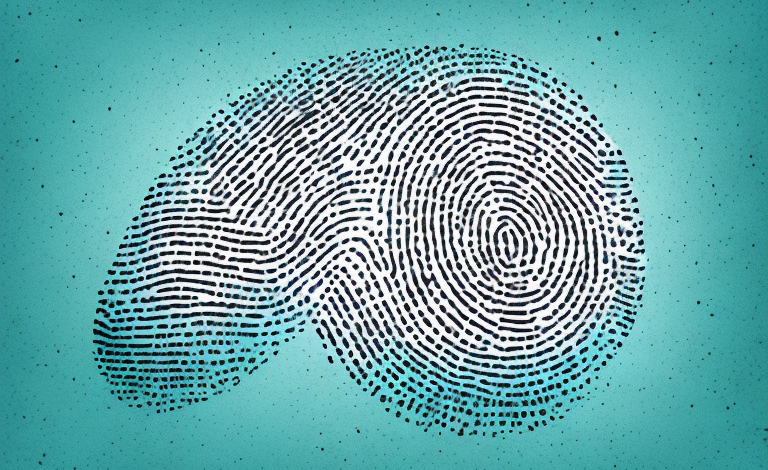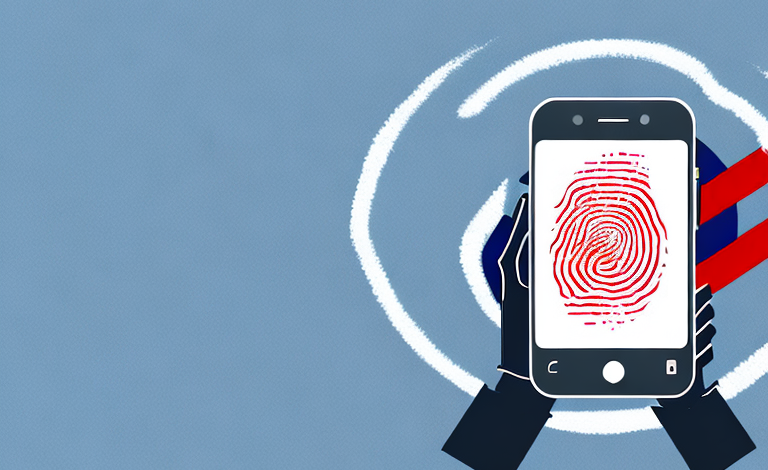In today’s digital age, the need for robust online security measures has never been more critical. Cybersecurity breaches and identity theft are on the rise, and individuals and businesses alike are seeking more efficient and effective ways to protect their sensitive information from prying eyes. While traditional passwords have long been the go-to method for online security, biometric authentication has emerged as an alternative to offer a safer and more convenient solution.
The Pros and Cons of Biometric Security Measures
Biometric authentication involves using a unique physical characteristic, such as fingerprints, facial recognition, or voice recognition, to identify and authenticate an individual. At first glance, it may seem like an effective solution to the security problems facing us today. Still, it is necessary to evaluate its advantages and disadvantages accurately.
One of the significant benefits of biometric authentication is the convenience it provides. With biometrics, users do not have to remember complicated passwords or PINs, which can be a lifesaver, especially for people handling many accounts that need passwords. Additionally, biometric authentication is unique to each user, making it challenging to compromise or replicate, thus making your account more secure. However, some limitations come with this authentication method, including the potential for false negatives, the inability to change biological features, and potential privacy concerns due to the storage of biometric data.
Another disadvantage of biometric authentication is that it may not be suitable for all users. For example, individuals with disabilities or medical conditions that affect their physical features may not be able to use biometric authentication. Additionally, biometric authentication systems can be expensive to implement and maintain, making it challenging for small businesses or individuals to adopt this technology. Finally, there is always the risk of biometric data being stolen or hacked, which can have severe consequences for individuals and organizations.
How Biometric Authentication Works and Its Advantages
Biometric authentication uses various physical or biological traits to identify and authenticate individuals. Facial recognition technology, for example, scans an individual’s facial features such as the size, shape, and location of the eyes, nose and mouth, and head shape to create a unique digital signature. This signature is then compared to a database of stored information to determine whether the individual is who they claim to be.
One of the significant advantages of biometric authentication is that each person’s biological features are unique and, therefore, incredibly difficult to replicate or steal. Additionally, biometric authentication eliminates the need to remember complex passwords, which has been notorious for being stolen or leaked.
Another advantage of biometric authentication is that it provides a higher level of security compared to traditional authentication methods. For instance, a password can be easily guessed or hacked, but biometric authentication requires the physical presence of the individual, making it much harder to bypass.
Moreover, biometric authentication can be used in various industries, including healthcare, finance, and government, to ensure secure access to sensitive information. It can also be used to prevent identity theft and fraud, as it is much harder to fake someone’s biometric data than to steal their password or ID card.
The Limitations and Vulnerabilities of Biometric Authentication
While biometric authentication offers improved security, it is not without its limitations and vulnerabilities. For instance, biometric data can be difficult to collect, store, and protect from potential hackers or other security breaches. Furthermore, biometric authentication is unable to account for human error, creating authentications challenges when the person is not in a controlled environment.
Another issue is that biological features can be faked or compromised, either by artificially creating fake fingerprints or the example of the “deep fake” videos that look like a targeted celebrity. Therefore, the biometric system may experience false negatives or give unauthorized access to fraudsters.
Moreover, biometric authentication can also be affected by changes in an individual’s physical characteristics, such as aging, injury, or illness. This can result in false negatives or the inability to authenticate the user, leading to frustration and inconvenience. Additionally, biometric authentication may not be suitable for certain populations, such as individuals with disabilities or those who have undergone cosmetic surgery.
Despite these limitations, biometric authentication remains a popular and effective security measure in many industries. To mitigate the risks associated with biometric authentication, it is important to implement strong security protocols, such as encryption and multi-factor authentication. Additionally, regular updates and maintenance of the biometric system can help to address vulnerabilities and ensure the system remains secure.
The Importance of Strong Passwords in Today’s Cybersecurity Landscape
Given the limitations of biometric authentication, traditional passwords remain essential in securing online accounts. While they can be challenging to create and remember, strong passwords are a crucial foundation in any security layering process.
Creating a strong password isn’t just essential; it’s a necessity in today’s digital age where everything is connected. A well-formed password is not only hard to guess but is also difficult for hackers to crack using brute-force methods.
One way to create a strong password is to use a combination of upper and lowercase letters, numbers, and symbols. It’s also important to avoid using easily guessable information such as your name, birthdate, or common words. Additionally, it’s recommended to use a unique password for each account to prevent a single breach from compromising multiple accounts.
However, even with strong passwords, it’s still important to practice good cybersecurity habits such as regularly updating passwords, enabling two-factor authentication, and being cautious of phishing scams. By taking these steps, you can help protect your personal information and prevent unauthorized access to your online accounts.
How to Create a Strong Password: Tips and Best Practices
Creating a strong password doesn’t have to be complicated. One of the simplest and most effective ways to create a robust password is by following a few basic rules. Firstly, try to use longer passwords with more characters, including letters, numbers, and symbols. Secondly, avoid using obvious passwords, especially those that use personal information such as name, date of birth, or pet’s name. Finally, use two-factor authentication or password managers to create and manage passwords.
The Risks of Over-Reliance on Biometric Security Measures
Biometrics may seem like a more straightforward and fool-proof authentication method, but the risks of relying on this method alone can be detrimental. The truth is that biometric data can be stolen or compromised, just like passwords, leading to identity theft or fraud.
Additionally, the over-reliance on biometric authentication can lead to negligence on the part of the end-users, eventually making the entire authentication process ineffective. People may become complacent and forget the importance of strong passwords or other security measures since they feel that biometrics have taken care of everything.
Combining Biometric Authentication and Strong Passwords for Maximum Security
Combining biometric authentication and strong passwords can provide a more robust security solution. Biometrics add an extra security layer that is difficult to fake or replicate, while passwords provide greater flexibility, allowing users to customize their authentication method to their liking.
Two-factor authentication, for instance, is an effective combination of biometric authentication and strong passwords, as it requires the use of both factors to gain access to an account. This method of authentication makes it more challenging for fraudsters or hackers to gain unauthorized access to an account.
The Future of Authentication: A Look at Emerging Technologies
Technology continues to evolve at an unprecedented pace, with new authentication methods emerging all the time. Alongside biometric authentication and strong passwords, the future may bring innovations such as physical tokens and behavioral authentication, among others.
For instance, advanced physical tokens such as smart-cards, RSA tokens, or USB keys are used, combined with PINs or biometrics to achieve robust authentication architectures, thus enhancing protection. Additionally, behavioral authentication technology uses a person’s behavior—such as typing speed, mouse movements, or device usage—to verify their identity, providing another layer of security.
Balancing Convenience and Security in the Age of Digital Identity Theft
Cybersecurity threats continue to increase, and with them come the need for stronger security measures to secure sensitive information. However, in the era of the “Internet of Things,” convenience has become as crucial as security. As people access many online services, balancing security and convenience is vital in striking a balance. While biometric authentication can provide security and convenience, it is necessary to weigh its benefits and limitations against other authentication methods to ensure maximum security.
The Role of Human Error in Cybersecurity Breaches
Despite the many measures put in place to secure sensitive information, human error remains one of the leading causes of cybersecurity breaches. Whether it’s the use of simple passwords, sharing login credentials, or leaving personal devices unsecured, the human factor is always a point of concern when dealing with online security.
It is, therefore, paramount to sensitize people on matters of cybersecurity and the importance of security measures such as strong passwords or biometric authentication. Regular security audits and training can also help mitigate the risk of human errors and eventually enhance an organization’s security posture.
Comparing the Effectiveness of Biometrics vs Passwords in Different Scenarios
The effectiveness of biometric authentication and strong passwords depends on the specific context or scenario. For instance, some situations may require a more straightforward authentication process, such as logins for social media or gaming platforms, where users may have multiple accounts that require passwords.
However, stringent security policies, such as those in banking, healthcare, or government environments, may require stricter authentication methods such as advanced biometric authentication, physical authentication tokens, or multifactor authentication methods.
Addressing Privacy Concerns with Biometric Authentication
Biometric authentication raises significant privacy concerns, especially regarding the storage and protection of biometric data. To address these concerns, organizations must take measures to protect biometric data and inform users of the data that they will be collecting and storing.
Additionally, regulatory bodies must establish clear guidelines and ensure compliance to guarantee user privacy is protected when using biometric authentication.
Understanding the Legal Implications of Using Biometric Data for Security Purposes
As biometric data becomes a more prevalent authentication method, understanding its legal implications is as important as understanding its security implications. For instance, the use of biometric data is subject to various regulations such as GDPR in Europe or the Biometric Information Privacy Act (BIPA) in the US.
Organizations must comply with these regulations and inform users of their rights to their biometric data. In addition, companies must ensure that biometric data is stored securely and not misused for malicious purposes.
Final Verdict: Which is Safer, Biometrics or Strong Passwords?
While biometric authentication provides enhanced security and convenience, it’s not entirely immune to security threats. Passwords, on the other hand, can provide an additional layer of security but are susceptible to human error and cyber threats.
The most effective security solution is to combine biometric authentication and strong passwords, creating multiple layers of security that provide a more robust security architecture. Organizations must take both measures seriously, sensitize their users and comply with regulatory requirements, and stay up-to-date with emerging authentication technologies to enhance cybersecurity measures continually.



